Best Fertilizer for Apple Trees
- December 20, 2023
- 0 comment
Fertilization is a critical component in cultivating thriving apple orchards. The judicious selection and application of the right fertilizer can significantly influence the vigor and vitality of apple trees. This practice goes beyond merely promoting growth; it plays a crucial role in optimizing fruit quality, enhancing the robustness of the trees, and fortifying them against a spectrum of diseases and pests. However, the art and science of fertilization are not one-size-fits-all. The quest for the ideal fertilizer necessitates a nuanced understanding of several key factors.
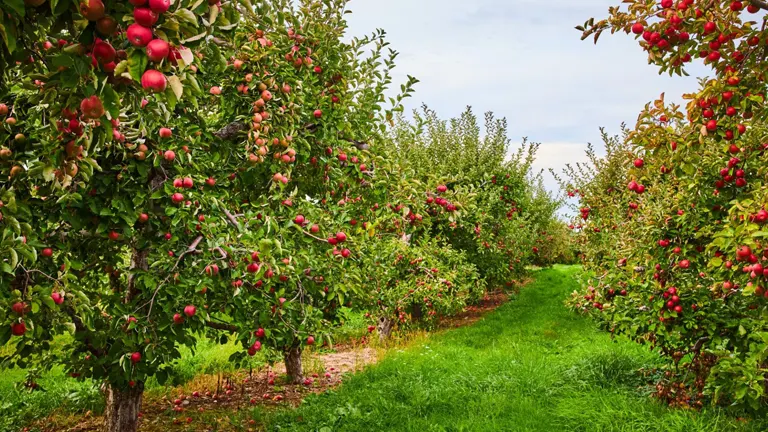
These include the specific type and composition of the soil in which the trees are planted, the developmental stage and age of the trees, and the unique climatic conditions of the region. This holistic approach ensures that the chosen fertilization strategy not only meets the immediate nutritional needs of the apple trees but also supports their long-term health and productivity, paving the way for bountiful and quality fruit harvests.
6 Best Fertilizers for Apple Trees
1. Jobe’s Organics Fruit & Nut Granular Fertilizer
Quick Specifications
- NPK Ratio: 3-5-5
- Form: Granulated
- Key Ingredients: Bone meal and other organic materials
This budget-friendly, organic option boasts a 3-5-5 NPK ratio, ideal for root development and reducing stress from extreme conditions. Its formulation, including bone meal, suits both young saplings and mature apple trees. Apply it every 4 to 6 weeks during the growing season for best results.
Pros
- Organic and environmentally friendly.
- Formulated specifically for fruit and nut trees, including apple trees.
- Enhances root development and stress resistance.
- Budget-friendly, making it accessible for most gardeners.
Cons
- Requires frequent application (every 4 to 6 weeks).
- Might not be as immediately impactful as synthetic fertilizers.
2. Miracle-Gro Fruit & Citrus Plant Food Spikes
Quick Specifications
- NPK Ratio: 10-15-15
- Form: Spike
- Key Ingredients: Blend of nutrients with some natural ingredients (not fully organic)
Designed for overall health and blossom production, these spikes with a 10-15-15 NPK ratio are perfect for stress resistance and continuous nutrient supply. They’re easy to use – just position them below the tree’s dripline and space them 3 feet apart. Application is recommended in spring and fall.
Pros
- Easy to apply with no mess.
- Slow-release formula provides a continuous nutrient supply.
- Designed to boost overall tree health and blossom production.
Cons
- Not organic, which might not align with organic gardening principles.
- Spike format may not distribute nutrients as evenly as granular or liquid fertilizers.
3. Down to Earth Fruit Tree Mix
Quick Specifications
- NPK Ratio: 6-2-4
- Form: Granular
- Key Ingredients: Feather Meal, Fish Bone Meal, Calcium Carbonate, Langbeinite, Potassium Sulfate, Alfalfa Meal, and Kelp Meal
An all-natural, OMRI-listed fertilizer with a 6-2-4 formula, it’s perfect for various fruiting plants. Packed with ingredients like Feather Meal, Fish Bone Meal, and Kelp Meal, it promotes healthy fruit development. Down to Earth has been a trusted brand since the late 70s, aligning with the growth of the organic movement.
Pros
- Certified organic and suitable for a wide range of fruit trees.
- Contains a diverse blend of natural ingredients.
- Supports organic gardening practices.
Cons
- May require more knowledge to apply correctly compared to more straightforward fertilizers.
- Could be less potent than synthetic alternatives, requiring patience for visible results.
4. Southern Ag All Purpose Fertilizer
Quick Specifications
- NPK Ratio: 10-10-10
- Form: Granular
- Additional Elements: Contains sulfur, boron, and zinc
With a balanced 10-10-10 NPK ratio, this fertilizer caters to tree growth, health, and fruit production. It also replenishes soil with trace elements like sulfur and zinc. It’s a granular fertilizer to be sprinkled and watered around the tree base.
Pros
- Balanced NPK ratio is suitable for overall growth and fruit production.
- Additional trace elements to support tree health.
- Versatile and can be used for various plants.
Cons
- Not organic, potentially less eco-friendly.
- The granular form requires proper watering for effective nutrient release.
5. Humboldts Secret Golden Tree Additive
Quick Specifications
- NPK Ratio: 0-0-2
- Form: Granular (water-soluble)
- Key Ingredients: Potassium, kelp, carbs, and other trace minerals
Despite its 0-0-2 NPK ratio, this product is enriched with kelp, carbs, and trace minerals. It boosts overall tree health and improves soil quality, enhancing the tree’s natural nutrient uptake. The water-soluble granules can be used both as a soil application and foliar spray.
Pros
- Unique blend of nutrients and trace elements for overall health.
- Versatile application methods (soil and foliar).
- Enhances nutrient uptake and utilization.
Cons
- Lacks nitrogen and phosphorus, so it might need to be used in conjunction with other fertilizers.
- Specific to certain nutritional needs, may not be a standalone solution.
6. DR EARTH Natural Wonder Fruit Tree Fertilizer
Quick Specifications
- NPK Ratio: 5-5-2
- Form: Granular
- Key Ingredients: Organic blend with microbes, probiotics, and prebiotics
This organic 5-5-2 NPK fertilizer also contains microbes, probiotics, and prebiotics, improving soil quality and nutrient absorption. Free from synthetics and GMOs, it’s suited for organic orchards and can be applied to the soil of both young and mature trees.
Pros
- Organic and contains beneficial microbes, probiotics, and prebiotics.
- Tailored for fruit trees, promoting both tree and foliage growth.
- Free from synthetic chemicals, aligning with eco-friendly practices.
Cons
- May require more frequent application than synthetic fertilizers.
- Organic blends can be more expensive than conventional fertilizers.
Understanding Apple Tree Nutrition
Understanding the nutritional needs of apple trees is fundamental to their successful cultivation. Just as a balanced diet is essential for human health, apple trees require a spectrum of nutrients to flourish and yield high-quality fruit. The primary nutrients vital for their growth are Nitrogen (N), Phosphorus (P), and Potassium (K), each playing a unique and crucial role.
| Nutrient | Deficient Dry matter (%) | Low Dry matter (%) | Normal Dry matter (%) | High Dry matter (%) |
|---|---|---|---|---|
| Nitrogen | <1.60 | <1.80 | 1.80-2.80 | >2.80 |
| Phosphorus | <0.11 | <0.15 | 0.15-0.30 | >0.30 |
| Potassium | <0.70 | <1.20 | 1.20-2.00 | >2.00 |
| Calcium | <0.31 | <1.30 | 1.30-3.00 | >3.00 |
| Magnesium | <0.03 | <0.20 | 0.20-0.40 | >0.40 |
| Manganese | <5 | <22 | 22-140 | >140 |
| Iron | <25 | <40 | 40-100 | >100 |
| Copper | <4 | <6 | 6-25 | >25 |
| Boron | <11 | <35 | 35-80 | >80 |
| Zinc | <6 | <20 | 20-200 | >200 |
- Nitrogen (N): This element is paramount for fostering healthy leaf growth in apple trees. Leaves are the site of photosynthesis, the process by which trees convert sunlight into the energy they need for growth. Adequate nitrogen ensures a lush canopy, which is essential for robust growth and high fruit yield.
- Phosphorus (P): Phosphorus is integral to the development of strong root systems, which are crucial for nutrient uptake and tree stability. Additionally, it plays a significant role in flower and fruit development, impacting both the quantity and quality of the fruit produced.
- Potassium (K): Potassium contributes to the overall health and vigor of apple trees. It aids in various plant processes, including water uptake, enzyme activation, and the synthesis of proteins and starches. A sufficient supply of potassium enhances the tree’s resistance to stress factors such as diseases, pests, and extreme weather conditions.
Beyond these macronutrients, apple trees also require an array of micronutrients, albeit in smaller quantities. These include:
- Calcium (Ca): Essential for cell wall development and stability, calcium plays a critical role in ensuring the structural integrity and storage quality of apples.
- Magnesium (Mg): This micronutrient is a central component of chlorophyll, the molecule responsible for the green color of leaves and essential for photosynthesis.
- Zinc (Zn): Zinc is vital for a range of functions, including enzyme activation, protein synthesis, and growth regulation. A deficiency in zinc can lead to poor fruit set and reduced growth.
A balanced supply of these nutrients, tailored to the apple tree’s specific growth stage and environmental conditions, is key to nurturing healthy trees and achieving optimal fruit production. Regular soil testing and observation of tree health can help in fine-tuning this nutritional balance, ensuring that the apple trees have access to the necessary nutrients for their growth and productivity.
Soil Testing and Its Importance
Soil testing is an indispensable step in the management and care of apple orchards. This process offers a scientific basis for understanding the specific nutrient composition of the soil in which apple trees are planted. By conducting a soil test before applying any fertilizer, growers can make informed decisions that are tailored to the actual needs of their trees.
- A soil test provides a detailed profile of the existing levels of essential nutrients within the soil, including macronutrients like Nitrogen (N), Phosphorus (P), and Potassium (K), as well as crucial micronutrients. This information is vital for identifying any nutrient deficiencies or imbalances that could potentially hinder the growth and fruiting of apple trees.
- With the insights gained from a soil test, growers can precisely calibrate the type and amount of fertilizer required. This precision not only ensures that the trees receive the exact nutrients they need but also helps in avoiding the over-application of fertilizers, which can be economically wasteful and environmentally harmful.
- Soil pH, a measure of soil acidity or alkalinity, significantly influences nutrient availability to plants. Most apple trees prefer a slightly acidic to neutral soil pH, typically between 6.0 and 7.0. If the soil is too acidic or too alkaline, certain nutrients become less available to the trees, which can affect growth and fruit production. A soil test will include a pH analysis, enabling adjustments through lime (to raise pH) or sulfur (to lower pH) applications if necessary.
- Every orchard has unique soil characteristics influenced by factors like soil type, previous cropping history, and local environmental conditions. Soil testing allows for the customization of fertilization practices to these specific conditions, enhancing the effectiveness of nutrient management.
Types of Fertilizers for Apple Trees
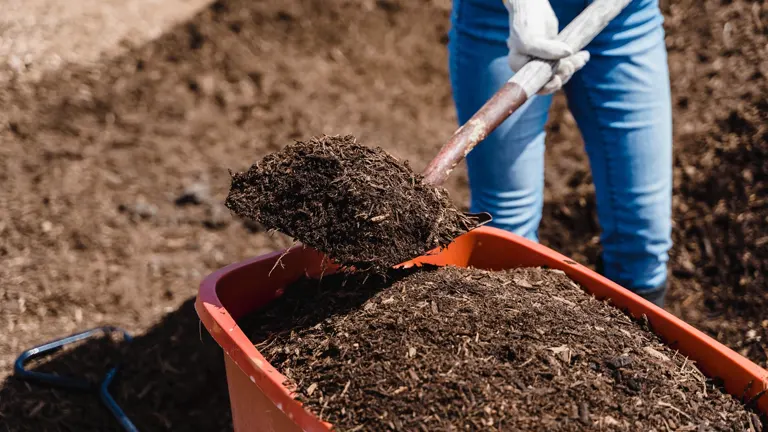
Organic fertilizers, such as compost or bone meal, release nutrients slowly and improve soil structure. Inorganic fertilizers provide quick nutrient availability but can lead to salt buildup if overused. Slow-release fertilizers are ideal for consistent nutrient supply, while fast-release options can be used for immediate needs. Liquid fertilizers are easy to apply, whereas granular types are best for a prolonged release.
Best Fertilizer Formulas for Apple Trees
Selecting the best fertilizer formula for apple trees is essential for their healthy growth and fruitful yield. The choice of fertilizer should be tailored to the tree’s life stage and specific nutritional needs, ensuring that the trees receive the optimal balance of nutrients for their development.
Fertilizer for Young Apple Trees
For young apple trees, especially those in their formative years, a balanced approach to fertilization is crucial.
- A fertilizer with an equal ratio of Nitrogen (N), Phosphorus (P), and Potassium (K), such as a 10-10-10 formula, is often recommended. This balanced blend provides young trees with the essential nutrients needed for overall growth.
- Nitrogen is vital for leaf and branch development, fostering a strong and healthy canopy.
- Phosphorus aids in establishing a robust root system, which is crucial for the stability and nutrient uptake of young trees.
- Potassium contributes to the general health of the tree and improves its resilience against stress and diseases.

Fertilizer for Mature Apple Trees
As apple trees mature and begin to bear fruit, their nutritional requirements change.
- A formula with a higher proportion of nitrogen, like a 20-10-10 blend, is beneficial for mature trees. The increased nitrogen supports the larger leaf canopy of mature trees, which is essential for photosynthesis and, consequently, fruit production.
- While nitrogen is increased, maintaining adequate levels of phosphorus and potassium is still important for root health and overall tree vitality.
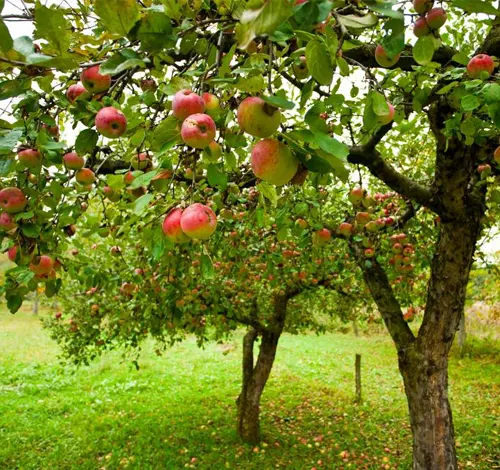
Specialized Fertilizers
In the realm of apple tree cultivation, there are scenarios where the use of specialized fertilizers becomes essential. These fertilizers are formulated to target specific nutritional deficiencies or to prevent certain physiological disorders that can affect the health and yield of the trees. One such disorder is the bitter pit in apples, which manifests as small, dark spots in the flesh of the fruit. This condition is frequently linked to a deficiency of calcium in the tree. Calcium is a crucial nutrient that not only enhances the quality of the fruit but also extends its storage life. By using fertilizers enriched with calcium, apple growers can effectively address this deficiency, ensuring that the fruits develop properly and are of the highest quality. This targeted approach to fertilization underscores the importance of understanding the unique nutritional needs of apple trees and the role of specific elements in their overall health and productivity.
Application Techniques and Timing
Applying fertilizer to apple trees requires a careful and informed approach, emphasizing both technique and timing for optimal tree health and productivity. The ideal method involves distributing the fertilizer around the drip line, the area directly beneath the outer circumference of the tree’s branches. This practice ensures that the nutrients are placed where the majority of the feeder roots are actively absorbing them, promoting efficient uptake. It’s crucial to avoid placing fertilizer too close to the trunk, as this can cause harm to the bark and underlying tissues, potentially leading to disease and pest infestation.
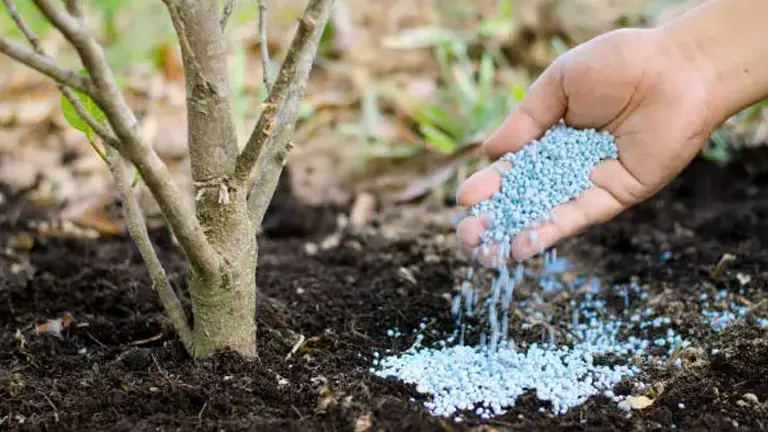
The timing of fertilizer application is also vital, with early spring being the optimal period. This season aligns with the tree’s natural growth cycle, as it emerges from dormancy and begins to grow new leaves and buds. Providing nutrients at this stage helps to support the tree’s growth and fruit development throughout the year. Additionally, the age of the tree should guide the fertilization schedule. Younger trees, still in their growth phase, generally benefit from more frequent fertilization as they establish their root systems and build their canopy.
Common Mistakes to Avoid in Fertilizing Apple Trees
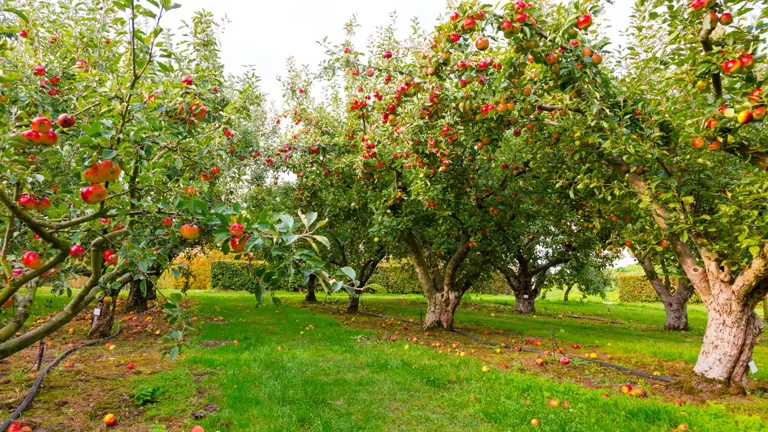
Avoiding common mistakes in fertilizing apple trees is crucial for their health and productivity. Over-fertilization, particularly with nitrogen, can lead to excessive leaf growth at the expense of fruiting, and can also damage the root system. Additionally, neglecting soil pH is a common oversight; incorrect pH levels can render nutrients in the soil inaccessible to the trees, regardless of the amount of fertilizer applied. It’s important to strike a balance in fertilization and to regularly check soil pH to ensure nutrients are effectively absorbed.
Eco-friendly and Sustainable Fertilization Practices
Adopting eco-friendly and sustainable fertilization practices is key to maintaining the health of apple trees while preserving the environment. Utilizing compost and other organic materials is an excellent way to provide essential nutrients to the trees. These organic amendments do more than just feed the trees; they enhance the overall soil health by improving its structure, increasing its water retention capacity, and fostering beneficial microbial activity.

In addition to using organic inputs, implementing practices such as crop rotation and cover cropping can significantly improve long-term soil fertility. Crop rotation helps in preventing soil-borne diseases and reduces pest infestations, while cover crops add organic matter to the soil, prevent erosion, and can help in managing weeds and maintaining soil moisture.
Conclusion
The selection and application of the right fertilizer are critical for the health and productivity of apple trees. A deep understanding of your trees’ specific nutritional needs, coupled with responsible fertilization practices, is essential. By combining this knowledge with eco-friendly and sustainable approaches, you can not only ensure the well-being of your apple trees but also contribute to the overall health of the ecosystem. This thoughtful and informed approach to fertilization promises fruitful and bountiful harvests for many years.
FAQs
- Why is my apple tree not flowering?
Apple trees typically begin flowering after a few years of growth. Ensure they receive enough sunlight, proper pruning, and appropriate nutrients. Inadequate sunlight, incorrect pruning, or nutrient imbalances can delay flowering. - How often should I water my apple tree?
Regular watering is crucial, especially for young trees and during dry periods. Aim for deep, infrequent watering to encourage strong root growth. However, avoid overwatering as this can lead to root rot. - When is the best time to prune an apple tree?
The ideal time for pruning apple trees is late winter or early spring before new growth starts. Pruning during dormancy encourages new growth in spring and allows for easier tree assessment and shaping. - Can I grow an apple tree in a container?
Yes, dwarf and semi-dwarf apple tree varieties can be grown in large containers. Ensure they have adequate room for root growth, proper drainage, and regular feeding and watering. - How can I protect my apple tree from pests and diseases?
Regular inspections, proper pruning, and cleanliness around the tree help prevent infestations. Use appropriate organic or chemical treatments as needed, based on the specific pest or disease. - What should I do if the leaves on my apple tree are turning yellow?
Yellowing leaves can be a sign of nutrient deficiency, overwatering, or disease. Conduct a soil test to check nutrient levels and adjust watering habits. If disease is suspected, seek specific treatment. - How can I improve pollination for my apple tree?
Planting different apple tree varieties nearby can enhance cross-pollination. Also, attracting bees and other pollinators to your garden with diverse flowering plants can greatly improve pollination. - Is mulching beneficial for apple trees?
Yes, mulching helps retain soil moisture, suppress weeds, and add organic matter to the soil as it decomposes. Apply a layer of organic mulch around the base of the tree, avoiding direct contact with the trunk. - How long does it take for an apple tree to bear fruit?
Depending on the variety and growing conditions, apple trees can take 3 to 5 years to start bearing fruit after planting. Dwarf varieties may bear fruit sooner than standard trees. - Can apple trees survive in cold climates?
Many apple tree varieties are hardy and can tolerate cold climates. Choose a variety suited to your specific climate zone for best results. Winter protection may be necessary in extremely cold areas.

David Murray
Forestry AuthorI'm David Murry, a forestry equipment specialist with a focus on chainsaw operation. With over 13 years of experience, I've honed my skills in operating and maintaining a wide range of machinery, from chainsaws to log splitters. My passion for the outdoors and commitment to sustainable forestry drive my work, which emphasizes safety, efficiency, and staying updated with industry advancements. Additionally, I'm dedicated to sharing my expertise and promoting environmental awareness within the forestry community.

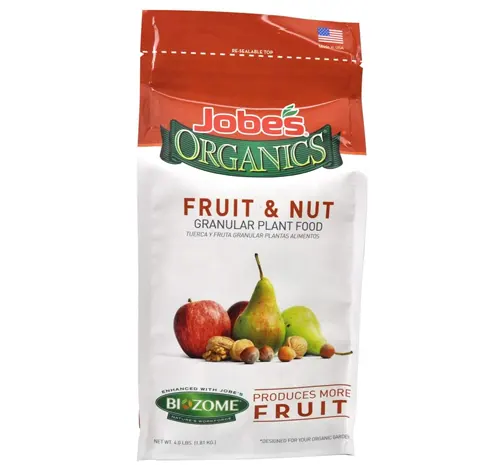
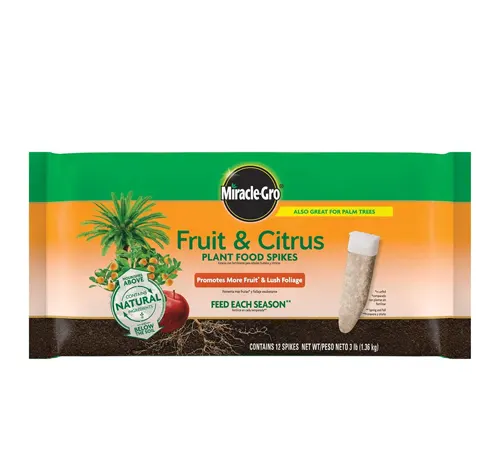
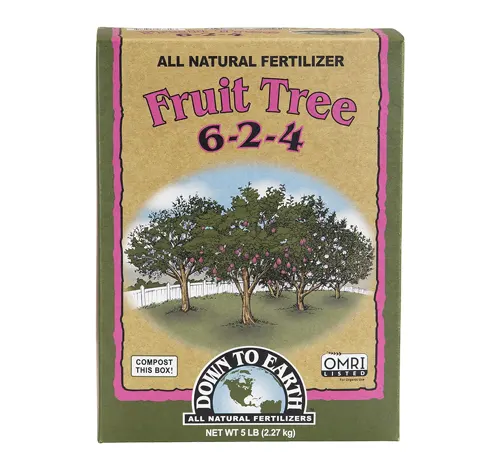
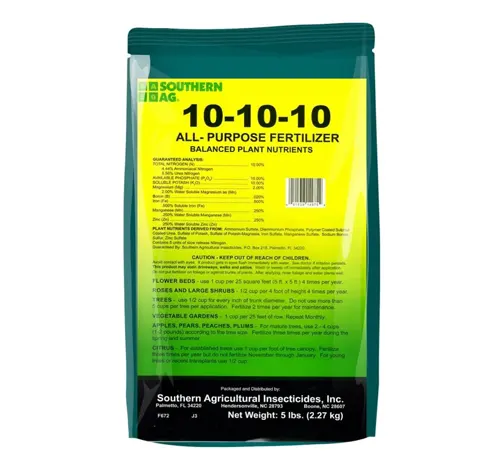
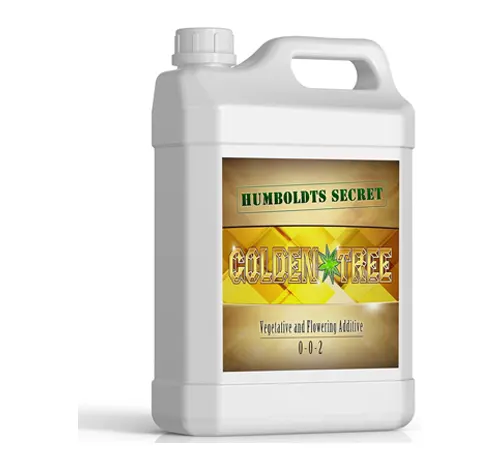













Leave your comment